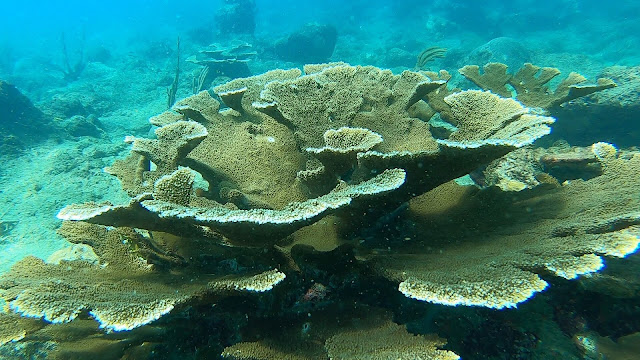The Shape of Water
Dr
Anjani Ganase looks at the influence of rivers, the creation of deltas and the
places where the sea comes in.
River deltas are formed where
rivers meet the ocean. The dynamic water movement driven by the forces of
waves, tides and river flow all shape deltas and result in unique wetland
ecosystems that live within the narrow margins between the land and sea. As
seasons change, as storms surge and tides turn, we also observe shifts in the
distribution of soil, vegetation and aquatic life that utilise the confines of
the delta. Rivers bring soil from inland, and the sediment settles out as the
river slows where it nears the ocean. This is because of the flatter, even
terrain that occurs when the river reaches sea-level that allows the river to widen
as it is no longer is restricted by the river banks and can spill over a low
lying flood plain. Apart from the river flow, ocean waves, tides and even the
spin of the earth (coriolis effect - which is the deflection of water flow
because of the spinning of the earth) drive the patterns of sediment settlement
in a river delta.
 |
| The Ganges-Brahmaputra delta as seen from space is over 40,000 square miles in size. Image courtesy Jacques Descloitres, MODIS Land Team |
The shape of the spread is the
result of the forces of tides and waves that brace the flow of the river water
and relocate the sediment locally. The classic shape of a delta resembles the Greek
symbol it’s named after, a delta or a triangle. It is also described as a
(alluvial) fan made up of a series of channels constructed by the build up
sediment in certain localities and erosion in other areas. However, not all
deltas take this shape. One classic exception is the Mississippi delta that from
space appears as giant bird’s claw as it extends into the Gulf of Mexico. The
flow of the river out to sea pushes into this shape, which has become more
prominent over time, owing to the net increase in the sediment along these
channels. While the pattern of outflow from the Mississippi river has been this
way in recent time (last 600 years), and largely fixed in this pattern owing to
development; over the last 10,000 years, the Mississippi has frequently changed
course within a 300 km range, accounting for its wide expanse.
 |
| The Mississippi
Delta sticks in the Gulf of Mexico like a bird’s foot (2001). NASA image created by Jesse Allen, using
data provided by the University of Maryland’s Global Land Cover Facility.
|
The ecology of river deltas
and the fertility of the soils that collect along deltas have been known by man
for centuries, and deltas have been used as agricultural lands that supported many
civilizations. These include the ancient civilizations that surround the Nile
delta in Egypt; the Tigris and the Euphrates that flow into the Persian Gulf,
and the Ganges-Brahmaputra delta in Bangladesh. Some of the largest deltas
around the world include the Amazon delta in Brazil, the Ganges-Brahmaputra
delta in Bangladesh, the Huong–he in China and the Mississippi River in the USA.
As comparison of the delta sizes, the Ganges-Brahmaputra delta is about 40,000
square miles in area, which is about the size of Iceland. The sediment load discharged
from the delta has been carried a great distance, over 2,500 km from the origin
of the Ganges River, the Gangotri Glacier in the Himalayas.
 |
| At night, city
lights outline the Nile delta from space. Astronaut photograph ISS025-E-9858 was
acquired on October 28, 2010. ISS Crew Earth Observations experiment and Image
Science & Analysis Laboratory, Johnson Space Center
|
In our marine backyard, the
Orinoco river delta, which flows out to sea just south of Trinidad and Tobago,
is larger than the area of Trinidad; and its discharge is felt all around
Tobago. For a delta this size, it makes sense that the Orinoco river discharge has
such an influence on our marine environment and is responsible for significant
sediment collection in the Gulf of Paria. Any disturbances upstream of the
Orinoco will not just affect the dynamics of the Orinoco delta but the water
that flows around Trinidad and Tobago.
With the development of human
civilizations around deltas, changes in land and water use in turn affect the
structure of deltas. In a study published this year, a group of scientists were
able to model the impact of human activities, namely damming and deforestation
on the changes in the shape of 11,000 river deltas worldwide using historical satellite
imagery. They found prominent trends with regard to the changes in sediment
deposition patterns in the deltas that resulted in either land gain or loss. Additional
gains in land around deltas were related to deforestation. Deforestation
upstream destabilises sediment and results in an increase in sediment flux in
the river and consequently greater deposits at river deltas. Conversely, the damming
of rivers upstream often resulted in the reduction of sediment flow downstream that
results in the land loss or alternatively a shift to tide driven deltas where
the incoming tides infill delta channels.
While Trinidad and Tobago do
not have any major deltas, we are influenced by the South American rivers, the
Amazon and the Orinoco. We can also see the influence of river outlets on both
Trinidad and Tobago: consider the wetlands of the Caroni, and the many rivers
that drain into Nariva. Tobago’s Main Ridge gives rise to several rivers, many
of which have been named for the bays into which they drain: Bloody Bay River,
King’s Bay River, Roxborough, Goldsborough, Castara, and others which become a
stream in the dry season. Let the giant
deltas teach us this: the natural dynamics that occur at river mouths should be
allowed to persist in order to sustain healthy wetland ecosystems. There must
be active management of upstream activities to reduce deforestation and
maintain water quality. Awareness of river flow should be an element of coastal
development planning to reduce the risk of flooding.
References
Nienhuis, J. H., Ashton, A.
D., Edmonds, D. A., Hoitink, A. J. F., Kettner, A. J., Rowland, J. C., &
Törnqvist, T. E. (2020). Global-scale human impact on delta morphology has led
to net land area gain. Nature, 577(7791), 514-518.


